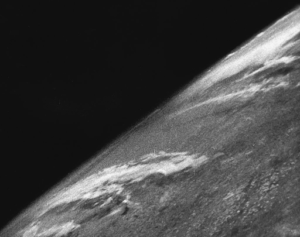
October 4, 1957, at the Baikonur Cosmodrome, initiating launch, R-7 8K71 ready for ignition, commencing lift off. The Cold War, the conflict of colliding ideologies, a conflict of global prestige between two rival powers, at its core, was a conflict of technological and intellectual supremacy. This clash of political and economic ideologies manifested in violent wars and political upheaval, such as the Korean War, the Vietnam War, a thermonuclear weapon arms race, the Cuban Missile Crisis. However, its manifestation also extended into the matter of nationalistic prestige such as the World Chess Championship, Bobby Fischer vs Boris Spassky. However, at the center of it all was the Space Race ignited by the launch of Sputnik 1 on October 4, 1957, by the Soviet Union.
Traveling back in time a decade to April of 1945, the Red Army is initiating the Vistula-Oder offensive. They are slowly crawling forward towards the German capital, Berlin. The Germans attempt a counter-offensive under the command of Heinrich Himmler, but it fails. The Soviets capture the Hungarian capital in the south. The allied forces under the command of Supreme Commander of Allied Expeditionary Force, General Eisenhower, bomb the German capital for 36 successive nights. In the end, Soviets enter and capture Berlin, marking the end of the last major offensives of the European theater of World War II. The Space Race found its starting ideas in the fall of Nazi Germany. Nazi Germany developed advanced rocket technology and weaponry under the guidance of Wernher von Braun, a German engineer and scientist.
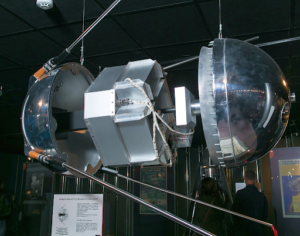
Once World War II had ended, both the United States and Soviet Union captured and recruited many German scientists and engineers to further develop the German V-2 rocket for each of their own military and civilian purposes, specifically to develop ballistic missiles for the nuclear arms race. It was the German V-2 rocket that laid the groundwork for liquid fuel missiles that would be used for the first rockets launched into space. Both nations, with German scientists and rocket development assets, leveraged their resources to develop their own missiles.
The idea of space travel first appeared when Mikhail Tikhonravov published “Flight to the Moon” in the newspaper, Pionerskaya Pravda, for young readers. It described a two-man spaceship capable of interplanetary space travel. Similar media was produced in the US with Disneyland’s animated episode Man in Space, firing up public enthusiasm for space travel.
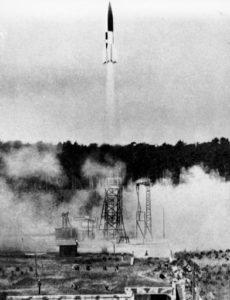
With German science, missile development for a nuclear arms race, and public enthusiasm backing the fierce rivalry between the United States and the Soviet Union in exploration and conquest of outer space, the stage was set for a science competition with the low cost of prestige, the economic stability, and safety of the entire nations. But the event that ignited the Space Race was the launch of Sputnik 1.
July 29, 1955, US President Dwight D. Eisenhower announced the United States would launch an artificial satellite into space. Four days later, Leonid Sedov, a leading Soviet physicist announced they too would launch an artificial satellite. After half a year of running calculations and holding test launches, on January 30, 1956, the Council of Ministers in the USSR approved practical work on an artificial Earth-orbiting satellite, Object D. The initial plan was to have Object D have a mass of 1,000-1,400 kg that would carry 200-300 kg of scientific instruments. However, difficulty in manufacturing and production resulted in chief Soviet rocket scientist, Sergei Korolev, redesigning Object D to a simple satellite, the Prosteishy Sputnik (PS-1). Instead, Sputnik 1 would be a metallic sphere weighing 83.3 kg and only 58 centimeters (23 inches) in diameter, capable of detecting the density of Earth’s thermosphere.
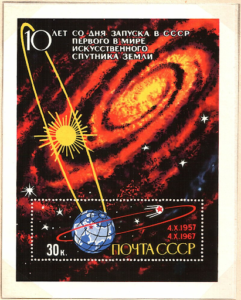
With promising results of the new Soviet ICBM, the R-7 based on the German V-2, Korolev was preparing a launch. However, hearing word that the US was planning to announce a major breakthrough at the National Academy of Science in Washington DC with a paper titled “Satellite Over the Planet” on October 6, 1957, Korolev, in anticipation, hastened the launch to October 4, 1957. R-7, vehicle 8K71PS number M1-PS, arrived at the Soviet missile base Tyura-Tam, launch site number one, prepared and ready for ignition. Friday, October 4, 1957, at exactly 10:28:34 pm Moscow time, vehicle 8K71PS lifted off. Only a few minutes later, Sputnik-1, an artificial moon, was in orbit. Ninety-five minutes post-launch, Sputnik 1 radio signals were detected at Tyura-Tam, signaling Korolev and the Soviets had placed the first successful artificial satellite into orbit. The Soviet Union’s successful launch of an artificial satellite marked the first time in history that mankind had ventured beyond the confines of Earth. The implications were profound and immediate.
In the United States, the reaction to Sputnik 1’s launch was a mixture of awe, fear, and urgency. The American public was stunned by the Soviet Union’s technological prowess and worried about the potential military implications of launching objects into space. The event gave rise to what historians often refer to as the “Sputnik Crisis.” It was not just a scientific milestone; it was a challenge to American pride and a threat to national security.

In response to the launch of Sputnik-1, the United States initiated a series of actions aimed at regaining its perceived superiority in space technology and restoring its national pride. President Dwight D. Eisenhower and the US government recognized the need for a robust response.
One of the immediate consequences was the establishment of the National Aeronautics and Space Administration (NASA) in 1958, a civilian space agency tasked with coordinating the country’s space efforts. The creation of NASA marked a pivotal moment in American history, reflecting the government’s commitment to space exploration.
Sputnik 1’s launch not only led to the creation of NASA but also intensified the Space Race. Both the United States and the Soviet Union accelerated their efforts to achieve various space milestones. The Soviets followed up Sputnik 1 with Sputnik 2, which carried a living being, Laika, the first dog in space, in November 1957. Meanwhile, the United States redoubled its efforts to launch its own satellites and astronauts into space.
The rivalry extended to significant milestones such as Yuri Gagarin becoming the first human in space in 1961 and the U.S. Apollo program’s moon landing in 1969. Each achievement was not only a scientific and technological breakthrough, but also a demonstration of each nation’s prowess, a way of asserting dominance in the global arena.
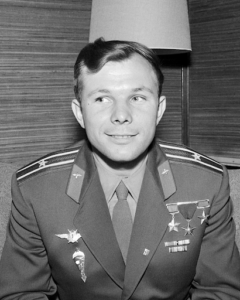
In conclusion, the launch of Sputnik 1 ignited the Space Race by serving as a catalyst for political, scientific, and cultural changes on a global scale. It marked the beginning of an era in which space exploration became a symbol of national prestige and power. The competition between the United States and the Soviet Union in space led to groundbreaking advancements in technology, science, and international cooperation. While the Space Race eventually culminated in cooperative ventures, such as the Apollo-Soyuz Test Project and the International Space Station, its origins can be traced back to that historic day in 1957 when Sputnik-1 pierced the heavens and forever changed the course of human history.
Peer Editor: Caroline Yu
Incredible and fascinating